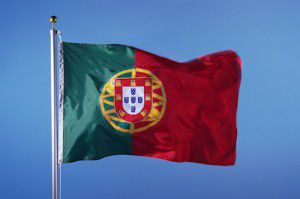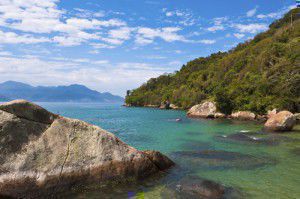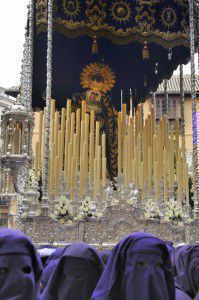Junior Language Challenge: why Portuguese?
The Junior Language Challenge 2015 launched last week, with children all over the UK learning Portuguese in the first round of our national competition. If you’re wondering why we picked Portuguese, here are a few fun facts about one of the world’s most widely spoken languages.
Boa sorte to everyone taking part in the Junior Language Challenge – and if you’re a parent or teacher of children aged 10 or under, take a look at the JLC website to find out more – it’s a lot of fun!
Portuguese facts and figures
 Portuguese is the official language of Brazil, Mozambique, Angola, Portugal, Guinea-Bissau, East Timor, Equatorial Guinea, Cape Verde, and São Tomé and Príncipe.
Portuguese is the official language of Brazil, Mozambique, Angola, Portugal, Guinea-Bissau, East Timor, Equatorial Guinea, Cape Verde, and São Tomé and Príncipe.
It’s a Romance language, along with French, Spanish, Italian and Romanian. This family of modern languages derives from Latin, which was spoken in the Roman Empire – hence the name.
Portuguese is the second most spoken of the Romance languages, after Spanish, and it’s the seventh most widely spoken language in the world. That said, there are significant differences between European and Brazilian Portuguese, so make sure you learn the right one before you travel! (We offer both…)
Portuguese and English
Some Portuguese words that we’ve adopted in English – piranha, flamingo, cobra, albino, palaver, mosquito. Does anyone know any more?
Saudade is a word with no direct English translation, which means a feeling of longing or nostalgia for someone or something that may never return.
Famous Portuguese speakers
José de Sousa Saramago (1922-2010), who won the Nobel Prize in Literature in 1998.
Luís Vaz de Camões (1524-1580), often considered the Portuguese language’s greatest poet, and best known for his epic work, Os Lusíadas.
Explorers Vasco da Gama, the first person to sail directly from Europe to India, and Ferdinand Magellan, the first to sail around the world. Some people also think that Christopher Columbus was Portuguese too, although most agree he was actually Italian.
Footballer Cristiano Ronaldo and manager Jose Mourinho, who are both from Portugal.
Actor Rodrigo Santoro and former racing driver Rubens Barrichello both come from Brazil, as did singer and actress Carmen Miranda.
Portuguese idioms
Like every language, Portuguese has its own idioms. Here are a few of our favourites:
A galinha do vizinho é sempre mais gorda
Translation: your neighbour’s chicken is always fatter
Meaning in English: the grass is always greener on the other side
Burro velho não aprende línguas
Translation: an old donkey doesn’t learn languages
Meaning in English: you can’t teach an old dog new tricks
Água mole em pedra dura tanto bate até que fura
Translation: water dripping day by day wears the hardest rock away
Meaning in English: persistence pays off
Did you know?
Tom Hanks, Keanu Reeves, James Franco and Nelly Furtado all have Portuguese heritage.
There’s an interactive Museum of the Portuguese Language, which opened in 2006 in São Paulo, Brazil. The 12,000 square foot museum is in the Estação da Luz train station.
Most importantly…
Portuguese was the language learnt by Colin Firth in Love Actually, so that he could ask a girl to marry him.
Goal! around the world [Infographic]
Sometimes one word is all you need… With the World Cup getting underway today, here’s how each national team says that all-important word, ‘goal’.
You can find this and lots more in our language learning app, uTalk – available to download and start learning right now from the App Store. So whether you’re watching the football at home or away, you’ll always be prepared.
(There are lots of non-football related words in there too, for those of us with other interests!)
Please do share the infographic with friends and tell us how you’ll be shouting ‘Goal!’ this World Cup 🙂
Embed This Image On Your Site (copy code below):
10 reasons to visit… Brazil
Where else for this week’s ’10 reasons…’ post but Brazil? This huge, beautiful and unique country will be attracting tourists by the thousands over the coming weeks, so here are our top tips – whether you’re visiting for the football and have a bit of spare time, or you’re planning a holiday for later in the year.
1. Ilha Grande
A beautiful island off the coast of Rio, which can be reached by ferry (no cars allowed – there are no roads for them to drive on anyway). It’s a great place to see local wildlife, and also has a fascinating history, having been a pirates’ lair, a leper colony and a prison in its time.
2. Beaches
With over 7,000km of coastline, it’s no surprise that Brazil has a lot of beaches. It would be impossible to name them all, but a couple of the most famous are Copacabana Beach in Rio de Janeiro, which is particularly well known for its New Year celebrations, attended by about three million people each year, and Praia do Cassino, near Rio Grande in the south of the country, which is thought to be the longest beach in the world at an incredible 245km.
3. Languages
With over 180 indigenous languages, Brazil is a language lover’s dream. Although most tourists should be able to get around with a smattering of basic Portuguese, if you’re heading off the beaten track, you may hear people speaking Tupí, Arawak, Carib, and Gê languages, among many others.
4. Let’s dance!
Brazil is probably best known for samba, the African-influenced music and dance style now popular across the world, and celebrated most famously at the annual Carnaval in Rio de Janeiro. Samba is far more than just music; it’s a hugely important part of Brazilian culture, and you’d be hard pressed to visit the country without experiencing it (and why would you want to?). Capoeira is another well-known tradition, which combines dance, acrobatics and martial arts set to music. Someone once tried to teach me some capoeira moves at university. It did not go well – turns out it’s quite difficult, especially if you’re as uncoordinated as I am – but it’s great fun to watch.
5. Iguaçu Falls
Found on the border between Brazil and Argentina, the Iguaçu Falls (or Iguazu Falls if you’re in Argentina) are one of the region’s most famous natural landmarks. There are 275 waterfalls in total, along a 2.7km stretch of the Iguazu River. Be sure to see the Devil’s Throat, a U-shaped chasm right on the border between the two countries, and if you can, take a boat trip under the falls for the ultimate water ride.
6. Christ the Redeemer
Another world-famous landmark, and one of the New Seven Wonders of the World, the 124 feet high statue of Jesus Christ hit the headlines last week when travel blogger Lee Thompson was given permission to climb to the top to take a selfie. Towering over the city of Rio de Janeiro from the top of the Corcovado mountain, the monument is a must-see if you go to Brazil. Unlike Lee, you won’t be able to go inside the statue, but you can visit the chapel in the pedestal at its base and the views from the mountain are still amazing.
7. Sea Kayaking in Paraty
Staying in Rio, if you want to get away from the crowds, why not try a spot of sea kayaking in Paraty Bay? Whether you’re a beginner or an experienced kayaker, this is a great way to enjoy fantastic views of the town and mountains, relax on the beautiful sandy beaches and explore a mangrove forest on your way to the base of the Sugarloaf mountain.
8. Amazon
The rainforest, not the website. Not an area to venture into unprepared, or alone, obviously, but great if you’re tired of the cities and want to get back to nature. Take a boat trip down the river, have a treetop adventure (there’s even a hotel), or try your hand at piranha fishing (not sure about that one, personally). The rainforest is full of wildlife, although many of the animals and birds will keep themselves to themselves, so if you do encounter any, it’s pretty exciting.
9. Food
Being a huge country, Brazil has many, many types of food, from feijoada (a black bean stew with beef and sausage), to pastéis (deep fried parcels containing pretty much whatever you like – cheese, beef, cod, you name it), quindim (a custard dessert made from sugar, egg yolks and coconut) to bolinhos de chuva* (fried doughballs sprinkled with sugar and cinnamon). It’s safe to say that whatever your tastes, you’ll probably find something you like in Brazil.
* I’m tempted to go to Brazil right now for some of these.
10. Football…?
Someone told me there’s a big football tournament happening in Brazil this month, so if you’re a fan, now might be a good time to visit. I don’t know about that, but I do know Brazil are a huge footballing nation. They’ve won the World Cup (that was it!) five times, more than any other nation, and will be hoping to make it six in a few weeks. If they can get past England, obviously…
If you are visiting Brazil, remember to learn some basic Brazilian Portuguese before you go – it’ll make everything a lot easier and much more fun. Take uTalk for iOS with you and you’ll never be lost for words!
I realise I’ve barely scratched the surface of what this huge country has to offer, so if you want to share any tips of your own, please do so in the comments.
Liz
Easter celebrations around the world
Here in the UK, this weekend is Easter weekend. Many people will be marking the occasion by attending church services on Good Friday and Easter Sunday, while a more commercial tradition is to exchange chocolate eggs as gifts. Easter is a religious holiday, marking for many people around the world the death and resurrection of Jesus, but it also represents new life, falling as it does in spring time, and is often symbolised by young animals, like lambs and chicks.
We decided to have a look at some Easter traditions around the world, to see how other countries mark this holiday. Here are just a few:
Brazil
Mardi Gras (which means ‘Fat Tuesday’) takes place in Rio de Janeiro on Shrove Tuesday and marks the start of Lent. The streets are filled with large processions of people in brightly coloured, exotic costumes, marching, singing and dancing.
Another Brazilian tradition is to create straw dolls to represent Judas Iscariot, then destroy them in the street.
France
 Church bells are silent as a sign of mourning from Maundy Thursday until Easter Sunday. Sometimes children are told the bells (known as ‘cloches volants’ or ‘flying bells’) have gone to see the Pope and will return with Easter eggs.
Church bells are silent as a sign of mourning from Maundy Thursday until Easter Sunday. Sometimes children are told the bells (known as ‘cloches volants’ or ‘flying bells’) have gone to see the Pope and will return with Easter eggs.
In parts of southwest France, a giant omelette is made on Easter Monday. The dish can feed 1,000 people.
Ethiopia
During Lent in Ethiopia, Christians don’t eat or buy any animal products like meat, eggs, butter, milk, yogurt, cream and cheese.
The first Easter day service starts at 8 p.m. on Easter Saturday and lasts until 3 a.m. on Easter Sunday.
After the service, people will return to their homes and have a breakfast of ‘dabo’ sourdough bread to celebrate the end of Lent. Traditionally, the bread is cut by a priest or the head man in the family.
Czech Republic and Slovakia
As part of an Easter tradition, women and girls are beaten with decorated hand made whips on Easter Sunday. But despite what you might think, this is actually a good thing; the whipping is thought to make women more healthy and beautiful, and girls who don’t get whipped are often quite offended!
Chios (Greek Island)
In the village of Vrondados, the annual ‘war of rockets’ is staged between two churches, Agios Marcos and Erithiani. Residents spend all year preparing thousands of firework rockets and on the evening of Easter Saturday, the rockets are fired between the two churches for hours.
The custom goes back many years, and although there are plenty of stories, no one is quite sure how the tradition began.
Spain
Many towns and cities in Spain celebrate Semana Santa (Holy Week) with processions through the streets at night. Floats called ‘tronos’ are carried through the streets. Each float bears huge decorated figures representing part of the Easter story. It takes 40-50 people to carry each trono on their shoulders and processions can last between 4-5 hours.
In Murcia, a trono telling the story of the Last Supper has real food on the table. On Easter Sunday, the 26 men who have carried the table in the procession sit down and eat the food.
Please share your own Easter traditions in the comments. And whether you celebrate Easter or not, we hope you have a great weekend.
Seb






